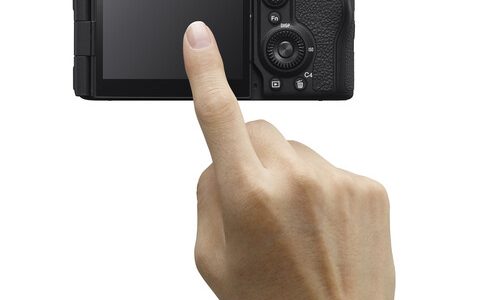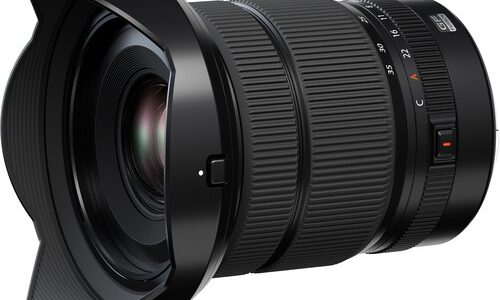

In part 1 of this article, we looked at the Nikon Z7 and Sony A7r IV in their competitive landscape. This part will look at the Z7 and the A7r IV in their respective systems – lenses, batteries, cards, flash and other accessories, and at the future of the two systems. Neither one has everything available that any photographer might want, and both have advantages and disadvantages. In the third part, we’ll look at image quality, handling and performance.
Lenses – Nikon (yes, you read that right)
This is going to be controversial, but Nikon has more and higher-quality lenses than Sony does (although both brands have most of what you want). Furthermore, Nikon has a couple of specific strengths (and one glaring weakness) in their lens lineup, while Sony has a couple of weaknesses. In order to say this, I’m obviously counting the FTZ adapter (and a lot of F-mount lenses it enables) as part of the Nikon lens line, and not giving Sony a lot of credit for either their adapters to old Minolta A-mount lenses, nor for the existence of third-party Canon to Sony adapters that support many functions. If Sony produced a really solid, first-party Canon to Sony adapter, it would ALMOST count as something like the FTZ.
If Sony produced such an adapter with Canon’s full cooperation, hell would have frozen over, but that WOULD be equivalent to the FTZ. The reason the FTZ is so stable is that there is no reverse engineering involved on either the lens or body side – the only way that could be true of a Canon to Sony adapter is if Canon and Sony cooperated on it. A small company like Metabones reverse engineering both the body and lens protocols is not the same situation.
The A-mount adapters for Sony cameras are in the same situation as the FTZ (Sony owns the mounts on both sides), but A-mount doesn’t add a lot of lens choices that FE doesn’t have covered. Sony has two versions of their adapter – one is just like the FTZ, autofocus only with recent internal-motor lenses, but small, light and fast. There are only a few recent lenses that are not near-duplicates of native FE lenses – the adapter is mainly for the occasional photographer who stuck with A-mount for a long time and has a couple of nice recent lenses, not for expanding choices. The other actually includes a DSLR-style focus sensor and a fixed mirror, and it is larger, heavier, slower and more expensive but adds (relatively slow) AF with older lenses at the cost of some light transmission.

I have tried four F-mount Nikkors on the Z7 with the FTZ (I’ve never used an adapted A-mount lens on a FE body), and all have performed seamlessly – maybe not quite the same focusing performance as the same lens on a D850, but darned close. They’re optically identical to the same lens on a D850, since the FTZ has no glass in it, and is very precisely put together. Two of the lenses I have rented are intended to address the specific weakness of the Z lineup, and are especially suited to the compact Z7 – they are the wonderful 300mm and 500mm PF telephotos, the ideal long choices for the body. I have also had the 105mm f1.4, a bokeh monster if there ever was one, and the 70-300 mm f4.5-5.6 AF-P. The 70-300 is a good consumer grade zoom, not really enough lens for the Z7 (or the D850), but it gives a good account of itself. The 105 f1.4 is a fantastic lens, and it behaves like a native lens.



Both images are at 100% (thus the slightly different scale), converted in DxO Photo Lab from uncompressed raw. Both set off with the self-timer from atop the Mighty Robus (a beautiful carbon fiber tripod made by B&H’s Robus store brand with a 55 lb weight capacity).
I know the zoom’s not fair, but I didn’t have a 50mm Sony prime. I chose f4.5 because it was the best looking aperture on the Sony lens.
Another strength of Nikon’s lens line over Sony’s is the consistently high quality of the S line native lenses. The 14-30mm f4 is probably the weakest of the bunch, and it’s still a very good lens. The 50mm f1.8 is the sharpest reasonably priced normal lens in the world – the only sharper option in any mount is the Otus. The Sigma Art is in very much the same category as the little Nikkor, but at a much greater price and weight. The S line lenses range from very good, through many in the excellent range to “wow”. They are a limited, but well chosen range for a compact mirrorless camera. Nikon made the decision to start with high-quality, modest aperture lenses, to keep the system as portable as it is. While none of the lenses except the exotic “look what we can do” Noct are especially fast, only the 24-240mm travel zoom and two inexpensive DX lenses (that are of no interest to Z7 customers) are especially slow.
Even without the FTZ, there is a relatively complete set of primes from 20mm to 85mm, all f1.8 and very high quality. Add two excellent normal zooms at f2.8 and f4, both constant aperture, and a very good constant f4 ultrawide zoom and you have a system whose huge weakness is telephoto. Below the telephoto range, the Z system is not glaringly incomplete counting only native lenses – a few faster lenses, especially a fast 85 or 105mm ”bokeh special” portrait lens, would be nice, and a 105mm Micro-Nikkor would be very welcome. Nikon is about to release a native 70-200mm f2.8, which will help in the moderate telephoto range.
They certainly need a more compact telephoto option than a 70-200mm f2.8, and eventually to start transitioning the longer telephotos to Z mount. Nikon has a huge advantage in the telephoto range– they have released two very successful compact telephotos in the F-mount using their Phase Fresnel (PF) technology. Canon played with something similar, but neither of their lenses was a great success, and both were discontinued. Both the 300mm f4 PF and the 500mm f5.6 PF Nikkors are a great deal smaller and lighter than one would expect for their specifications – the 300mm f4 looks like a 24-70mm f2.8, and is actually lighter than most of them. The 500mm f5.6 PF looks like a 70-200mm f2.8, and is around the same weight. Both are superb performers, and both work very well on the Z7 with the FTZ.
The compact telephoto I’d like to see is something like a 70-300mm f3.5-4.8 PF. Because it would be a PF lens, it could be significantly smaller and lighter than one would expect for a lens like that – maybe the size of a standard DSLR 70-300mm that’s half a stop slower, maybe even a little smaller than that. Nikon has a 100-400mm on the roadmap – maybe that’s a PF lens? What if it’s a 100-400 that looks like a slightly big 70-300? I would like to see a complete line of Z-mount PF telephotos, maybe a stop slower than the big lenses for compactness. Why not start with a 400mm f4 (or f4.5), since the 300mm f4 already works so well on the FTZ? Maybe the second lens should slot in above the 500mm f5.6 – how about a 600mm?
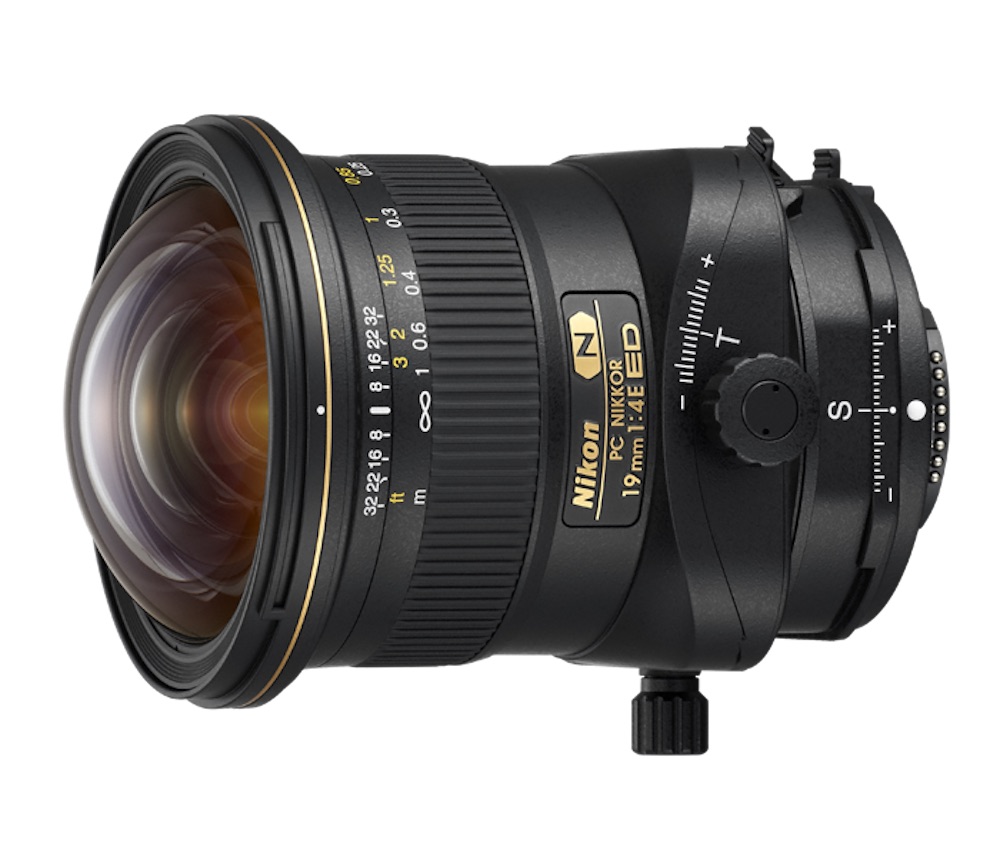
One huge advantage of having the FTZ is that specialty lenses that will take a long time to appear in any mirrorless mount are easily accessible, with good performance. Nobody has a high-quality native tilt-shift lens for any mirrorless mount (my bet for the first one is actually Fujifilm GFX) – but the tilt-shift Nikkors are fully compatible with the FTZ. There are no first-party mirrorless fisheye lenses outside of Micro 4/3, and the only options for Sony other than Canon/Metabones jury-rigs are low-end Samyang/Rokinon type lenses – but there have been many fisheye Nikkors over the years. The current 8-15mm fisheye zoom is fully compatible with the FTZ, including autofocus, and many older, more exotic fisheyes will work (generally manual focus, but do you even need to focus the ultra-exotic 6mm f2.8)?
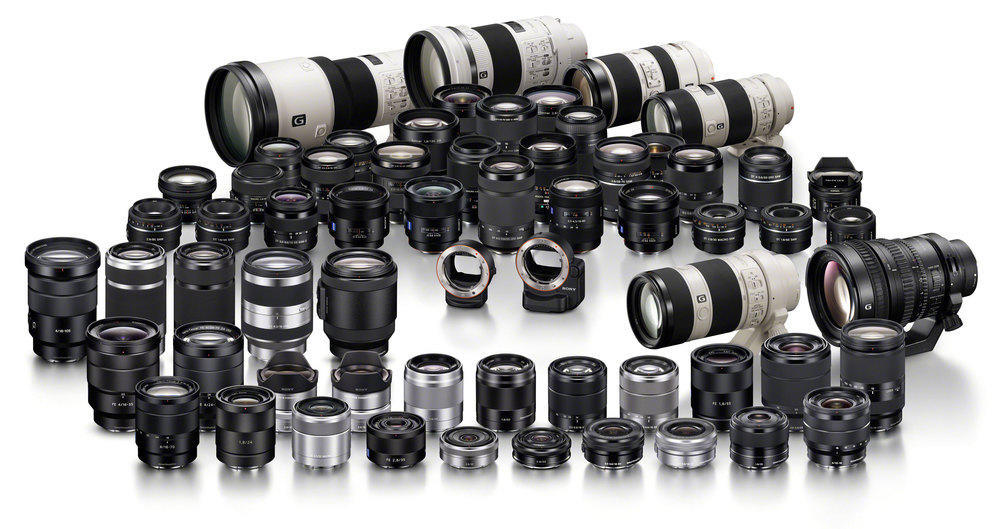
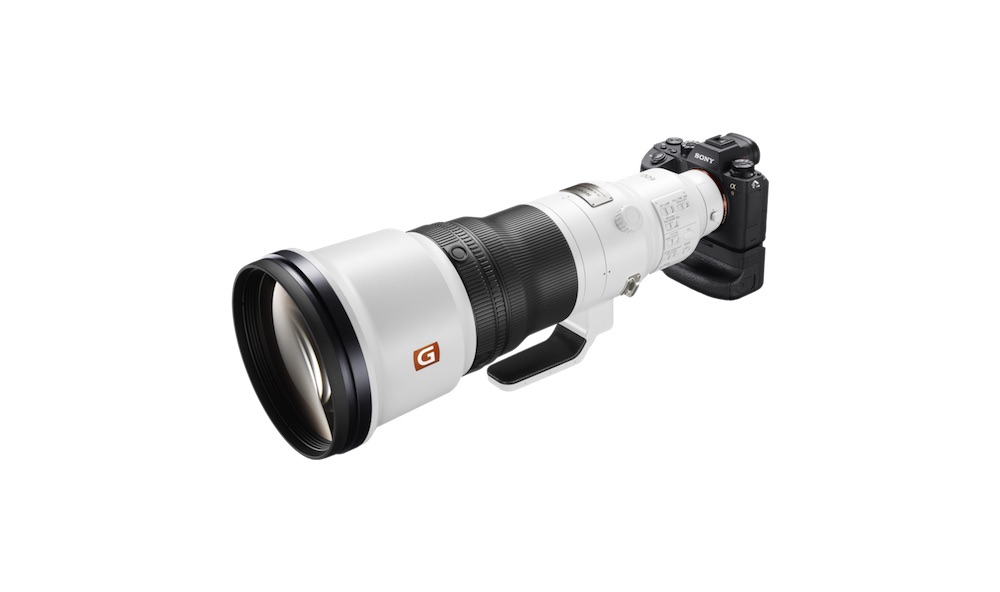
With all that said about Nikon’s lens lineup, Sony also makes quite a few excellent lenses – the native lineup is, of course, much broader than Nikon’s native Z lineup, and includes several longer choices where Nikon relies on the FTZ. The 24-105mm and 12-24mm f4 pair I had with the A7r IV body were sharp and quick to focus, and they did a nice job on the high-resolution body. When I shot brick-wall resolution tests, the 50mm f1.8 Nikkor on the Z7 outperformed the 24-105mm f4 on the higher-resolution Sony body, but that’s more a comment on just how spectacular that Nikkor is than anything negative about the Sony lens. I haven’t used the higher-end Sony primes, but people who have tend to like them a lot – I suspect there is a Sony lens in the 50mm range that would have given the Nikkor a run for its money and really shown off the body. The newish 400mm f2.8 and 600mm f4 G-Master telephotos are among the sharpest long lenses in the world.


Sony’s lens selection is pretty good, with two big holes. There’s a nice range of primes and zooms going from a 12-24mm zoom to a couple of options at 600mm (a relatively inexpensive 200-600mm zoom and an exotic prime). There are a couple of macro lenses at 50mm and 90mm – while 50mm is a little short, 90mm is a useful macro focal length. There are a couple of exotic lenses, notably a 100mm apodizing lens (a special design that gives very smooth bokeh) and the 400mm f2.8 and 600mm f4 telephotos. Many of the Sony lenses are excellent, but there are some lesser performers mixed in (unlike the Z system, where every lens that has reached reviewers so far is at least very good). The lesser performers are concentrated among inexpensive lenses and lenses from the early days of the FE mount.
The most important weakness is that there is no high-quality, compact midrange zoom. The 24-105mm f4 is a very good lens, and the 24-70mm G Master is by all accounts an excellent one – but the 24-105mm is 1.5x the size and weight of the little 24-70mm f4 Nikkor, and the G Master is rapidly approaching twice the weight of the f4 Nikkor (Nikon’s 24-70mm f2.8 is only a little heavier than Sony’s 24-105mm f4). Yes, one Sony lens is longer and the other is faster – of course they’re bigger and heavier (and Nikon could use a 24-105mm f4).

Unfortunately, Sony’s 24-70mm f4 “Zeiss” is a mediocre lens from the very earliest days of the A7 system, badly in need of replacement – it’s a decent performer on 24 MP bodies, badly outclassed at 60 MP. The 28-70mm f3.5-5.6 is worse. Since these are compact bodies, Sony needs a compact, high-performance midrange zoom (a 24-70 f4, or maybe f3.5-4.5). The most important lens that is missing from the lineup entirely is a 300mm f2.8 – the most common of the exotic teles. There is an A-mount 300mm f2.8 that is one of the few cases where the adapter to Sony/Minolta A-mount might make sense, but it’s an older lens, not nearly up to the speed of the new G Masters. If you have an A-mount 300mm f2.8 around, or can pick one up cheaply used, of course get the adapter for it, but it’s very worth waiting for the inevitable G Master before buying a new lens.
Several third-party manufacturers make lenses for the Sony FE mount, while there is relatively limited third-party support for Nikon Z. At the present time, every third-party Z-mount lens is an inexpensive manual focus lens that lacks electronic communication with the body. Sigma, Zeiss, Tamron, Samyang/Rokinon and Tokina all make electronically linked AF lenses for Sony FE. Many of these are “stretched” DSLR lenses that include an extra piece of lens barrel to account for the shorter flange distance. Stretching an existing DSLR lens is no different from putting a Nikon F-mount version of the same lens on the FTZ adapter (and essentially all of the modified DSLR lenses also come in F-mount, so they’re actually available for both systems – the only difference is whether it gets a factory stretch or the photographer stretches it with their own FTZ). There are a small, but growing number of dedicated third-party mirrorless lenses available for Sony FE – these are new designs not equivalent to using an adapter. So far, those lenses haven’t made it to Nikon Z, and that could be an important difference.
Finally, the Nikon Z mount is technically superior to the FE mount. When Sony introduced the original A7 and A7r, perhaps not aware of what a game-changing system they were building, they recycled the E mount from the APS-C NEX cameras. It was designed for APS-C lenses, especially to fit on the tiny early NEX bodies, and is much smaller in diameter than the Z mount (or Canon EF). The smaller the diameter of the mount in relation to the sensor diagonal, the harder it is to design lenses, especially faster or wider lenses. The lens design issues become worse with digital sensors, both because of the much higher acuity (resolution per area – these full-frame sensors resolve like 4×5” or larger film) of digital sensors and because digital sensors are only sensitive to light entering close to perpendicular to the sensor, while film accepts light at odd angles. The FE mount is cramped – no more so than the similarly-sized, 60 year old Nikon F mount – but nobody would design the F mount for full frame today. Canon has used the much larger EF mount to design lenses that simply wouldn’t work on an F mount camera. Nikon, learning from Canon’s fast and wide lenses, built the Z mount even wider than EF (it’s close in diameter to some of the smaller medium format mounts), giving themselves a great deal of lens design flexibility.
By recycling the APS-C E mount, Sony gave themselves the struggle that Nikon finally escaped. There was no compatibility reason to keep the E mount – most of the APS-C E mount lenses are inexpensive, modest performers that few photographers would accept the crop factor to use on full-frame bodies. My suspicion is that the A7 and A7r were seen as curiosities within Sony at first. Photographers were asking for a version of the RX1 full-frame compact with a lens mount, so someone concocted a parts-bin project that took an existing RX1, threw an existing NEX mount on the front and permanently attached the viewfinder (from the NEX-7 parts bin) that was optional on the RX1. Early A7 series cameras really do look like that’s how they were designed. Note the oddly placed shutter button on the top deck instead of the grip and the nearly identical top (minus the finder) and rear plates between an early A7 and the RX1. Sony was then caught by surprise when the A7 line took off and became far more popular among serious photographers than the NEX line. They’ve mostly fixed A7 series ergonomics since then, but they’re still stuck with the NEX mount they originally duct-taped to the RX1.
Batteries and Cards – Sony:
There has been a huge amount of Internet squabbling about Nikon’s decision to go with a single card slot on the Z series. It’s not ideal, but it’s not as bad as pundits who have never used the cameras would like you to think it is – because that card slot is XQD/CFExpress. XQD and CFExpress (they are the same size and shape of card, and many cameras built to the older XQD standard can take the newer CFExpress cards with a firmware update – including the Z7 and its sibling Z6). These are blisteringly fast cards (CFExpress is basically a PCIe SSD like modern high-end laptops use), and they are sturdy, reliable things that use high-end flash memory. Do you use dual SSDs in your laptop? No, you back it up, but you don’t necessarily have an immediate dupe at all times, because laptop SSDs fail once in a long while, but not all that frequently.
XQD/CFExpress is also a physically smart design – the contact pins are shielded and very difficult to break on either the card or camera side, and the card housings are robust. I’ve lost far more SD cards due to the housings separating and other physical maladies (XQD and CFExpress are far better) than I have ever lost data off of SD cards due to corruption. I’ve never lost a byte of data off a top-end card (there’s always a first time, and care is warranted) to digital corruption. I’ve lost data off of cheap SD and Micro SD cards in GoPros and such, and I’ve seen students (who didn’t listen to their photo teacher telling them to buy SanDisk) lose data off of no-name SD cards. I’ve lost SD cards to housing separation (always out of the camera, with no data loss). Worst of all, I’ve bent socket pins in old-style CF sockets, which were a nightmare – a friend once managed to break a pin off inside a card, losing the data off the card, and sending the camera off to the shop! What I’ve never done (or even seen happen) is lost data off of a well-chosen, high-end card, other than the CF pin incident. Yes, two slots are better than one (hence the win to Sony in this category), but one XQD/CFExpress slot is not a bad design. Most XQD and CFExpress cards are high-quality, and Sony kept a very tight rein on XQD, but CFExpress is an open standard, and we may see lower-end cards begin to creep into the market. Especially with the single slot, pick high-quality cards.
Sony has a nearly perfect design in terms of both cards and batteries. Two SD UHS-II slots are the second-best possible design (bettered only by two XQD/CFExpress, which exists only in a few big DSLRs). Many dual SD cameras including Sony’s own A7r III have only one UHS-II slot, with the second being an older, slower standard. If you have asymmetric SD slots, using the second slot for backup doesn’t work for many video modes, which require the fast cards, and it slows down stills shooting to the speed of the slower card.
Don’t ruin Sony’s good engineering by using a junk card in the second slot, figuring that “it’s just a backup” – the slowest card determines the speed of the system. The A7r IV demands a matched pair of the fastest SanDisk Extreme Pro cards, or Sony’s own Tough cards (which have some improvements to physical design that make them less breakable), or other really top-end cards like Delkin Black or the highest end ProGrade. Most of these cards have write speeds in excess of 200 megabytes per second, and many are rugged physical designs. Spending a few hundred dollars on top-end memory cards for your $3000 camera is a wise investment. Sony would like you to use their own Tough G-series cards, and there are worse ideas…
One brand to watch out for is Lexar. The old Lexar isn’t the new Lexar. For years, Lexar was one of the two big players (with SanDisk) in the memory market. Lexar was first independent, then acquired by Micron, a very well-respected memory and SSD supplier. In 2017, the Lexar brand, but not the engineering team (who mostly went on to found ProGrade Digital), was acquired by Longsys. Longsys has no track record, either positive or negative, in the high-end photographic memory market. Will Lexar be another case of Vivitar or Polaroid – respected old names where just the brand was acquired and is now used on junk, or will it be a case of a company buying a brand and starting to sell high-quality product to consumers?
Longsys IS a memory manufacturer – selling almost exclusively to industry for embedded applications – so they could produce high-quality memory cards if they wanted to. Since they have been selling to an embedded market, there are essentially no reviews of any Longsys product (this is not unusual at all for a company that doesn’t sell to consumers) – all I could find was a very neutral Tom’s Hardware review of a SSD from five years ago (acceptable consumer SSD, no different from a million others), and a positive review of a CFExpress card based on benchmarking and brief usage.
Another big Sony design win is the new NP-FZ100 battery. For years, Sony used the venerable NP-FW50 battery in all of their mirrorless cameras. Introduced with the original (and tiny) NEX-3 and NEX-5 and designed to make the camera smaller, rather than to provide a lot of power, it became more and more inadequate as full-frame sensors, high-end video modes and image stabilizers drew far more power than the little battery was designed for. Finally, with the introduction of the A7 III and A7r III, Sony changed batteries, introducing an all-new design made for full-frame. The new NP-FZ100 is the best battery on any mirrorless camera today (although I haven’t used the new NP-W235 that Fujifilm introduced on the X-T4). It not only has the longest life of any mirrorless camera battery, it’s one of Sony’s InfoLithium series – it has an accurate life remaining gauge.
The only warning is that InfoLithium batteries are hard for the battery cloners to figure out – stick with genuine Sony batteries. I haven’t used Nitecore’s new NFZ100 “smart battery” – that may have InfoLithium figured out, and Nitecore chargers are also a good bet – Nitecore tends to be innovative, and they’ve been in the lithium battery business a long time! I’ve never used the Nitecore charger for the FZ-100, but I have their Nikon EN-EL15 charger and their Fujifilm NP-W126 charger, both of which are my go-to travel chargers. I’d happily use them as desk chargers as well, with the only inconvenience being their short USB cables. A friend has their charger for the older Sony NP-FW50 (which is a tricky InfoLithium battery), and it, too works very well.
Nikon has re-used their venerable EN-EL15 battery from just about every higher-end DSLR in the past decade. It’s a good-sized battery with decent life (about 2/3 of the life of the Sony battery), and many Nikon shooters have a pile of them around. The version that comes with the Z7 is the new EN-EL15B, which supports USB charging in camera. It has a standard life remaining gauge, not the accurate to a percentage point InfoLithium version It’s widely cloned, and both batteries and chargers are readily available from a variety of sources.

I tested a large number of EN-EL15 clones last fall, and the only non-Nikon battery worth using is B&H’s Watson brand. Most of the others have much shorter lives than a Nikon battery (sometimes as little as half as much). A couple of third-party batteries wouldn’t fit well in most of the chargers I had around, or were visibly slightly swollen. Some are as much as 30% lighter than Nikon batteries (which may seem like a good thing, until you realize that the heavy part of a battery is the chemistry that makes it go…). Just about any battery you find on Amazon from a no-name brand, or a brand you last heard of years ago making something other than batteries (e.g. Vivitar, Polaroid), is going to be very low-capacity, and possibly even dangerous.
The Watson batteries are about 2/3 the price of original Nikon batteries, weigh exactly the same amount, and have similar initial life. I have a mixture of Watson and Nikon batteries, and it will be interesting to test both after a few hundred cycles to see if the Watson holds up as well. One advantage to the age of the EN-EL15 is that there are all sorts of charging options. Many are not smart chargers – they just charge the battery for a specified time – THIS IS NOT A GOOD IDEA, AND COULD BE DANGEROUS. Extremely slow USB trickle-chargers are probably safe, but they are extremely slow. Most chargers on Amazon fall into one of those two categories.
Reputable non-manufacturer chargers for both Nikon and Sony include the Nitecore USB smart chargers – they’re small, light and actually charge batteries correctly. They are sold on Amazon, so make sure you get a Nitecore UNK2 for Nikon or USN4 Pro for Sony (it should cost about $30 not including any batteries), not some sponsored junk charger and battery set. Amazon is tricky, and often pushes a different product even when you search for something specific. Nitecore is the only USB charger I’ll use in the field. Watson makes a nice desktop dual battery charger with a gauge and a test function that they call the DUO LCD charger – about $80 with two EN-EL 15 plates, similar with NP-FZ 100 plates, doesn’t include batteries, sometimes goes on sale. Finally, the Ferrari of battery chargers is anything from Dolgin Engineering – they cost $400 and up, but they’re as good as the stuff Hollywood uses (in many cases, they ARE the stuff Hollywood uses).
Accessories (other than lenses, batteries and cards) and rental – Take your pick:
The Z7 has slightly broader flash compatibility than the A7r IV, but Sony builds really nice accessory grips while Nikon’s grip inexplicably has no controls on it. Nikon knows how to build a decent grip – they do it for all of their midrange and upper-end DSLRs – but they seemingly forgot to put control contacts on the Z bodies! Nikon’s flash system is older than Sony’s, and Nikon’s first-party flash lineup is a tiny bit broader. Nikon and Canon are the first two TTL systems that third-party manufacturers support – but Sony is almost always the third.
This matters primarily (and perhaps exclusively) in dealing with rentals and used gear. Sony TTL is widely enough supported that any kind of flash one might want is made for Sony – there may be additional choices for Nikon, but a Sony-compatible version will exist. If you’re trying to rent a specialty flash, especially in a smaller market, or you are looking for used flash gear, Nikon has an advantage.
Nikon gear in general is somewhat more available to rent locally than Sony, often with a wider selection. As an example, Hunt Photo, a large regional chain in New England that might be typical of big, but non-national stores, carries an excellent selection of both Nikon and Sony bodies, but their lens selection is broader for Nikon. The main difference is that they have three high-end telephoto primes for Nikon (the 300mm and 500mm PF lenses plus the exotic 500mm f4), as well as the consumer and prosumer telephoto zooms. They do not carry the other exotic telephoto primes (oddly, they don’t have a 300mm f2.8, while they DO have the significantly more specialized 500mm f4), nor the 200-400mm or 180-400mm exotic zooms. On the Sony side, they have an excellent selection of shorter lenses, but no really high-end telephotos above a 70-200mm f2.8. They have the 100-400mm and 200-600mm zooms, but neither of the two long G Master primes. Their flash selection is equivalent for Nikon and Sony – top of the line on-camera speedlights for both, and the TTL transmitters that make their Profoto monolights compatible with both systems. The big mail-order rental houses like Lensrentals, of course, carry absolutely full lines of both Nikon and Sony gear, including both of the big G Masters and all of the exotic telephoto Nikkors.
Essentially all third-party accessories other than flashes come in both Nikon and Sony versions – the Z7 uses the same remote plug as most midrange Nikons, and is easily adaptable to the round plug from the higher-end cameras, and Sony’s remote connector has been consistent for years. Nikon supports GPS signals over the accessory terminal, which Sony does not. Most photographers will end up either using the manufacturer’s smartphone apps to geotag images, or attaching GPS points from an external receiver after the fact, either of which should work with both brands. Using a GPS in the accessory terminal involves leaving the port cover off the terminal, presumably during outdoor activity, so correlating the points later seems like a better idea. If you don’t plan to rent a lot of equipment, and don’t like battery grips anyway, there is no advantage either way. If you rent, a point to Nikon, and if you put grips on every camera, one to Sony.
Company and mount stability – Nikon (both are very likely to survive, but read on)
Of course, Sony is a much larger company than Nikon, and far less likely to be bought, so the obvious answer is “Sony is the more stable choice”. To begin with, I wouldn’t be afraid to buy into EITHER of these systems. If there’s a contraction in camera manufacturers from seven or so to as few as three, both Nikon and Sony are going to be among the survivors – a three player market is Canon, Nikon and Sony, while four players is all of the above plus (probably) Fujifilm. In the much less likely case of a TWO player market, it could be either Canon and Nikon or Canon and Sony. Conventional wisdom is that Canon and Sony is the more likely two player configuration, but I actually think that the more likely of these two unlikely scenarios is Canon and Nikon.
Canon and Nikon are both camera companies, and Japanese national treasures AS historic camera companies. Any buyer for Nikon (or less likely, Canon) knows they are buying a camera company, and they want a camera business. Sony, on the other hand, is a conglomerate with a comparatively small camera business (including everything from point and shoots to CineAlta cinema cameras, it’s about 8% of their total business). Half of Sony’s revenue is entertainment (PlayStation, Sony Pictures and its myriad divisions, and Sony Music). The rest is divided among financial services (Sony is a bank in Japan and a life insurance company in much of Asia), TVs and other home electronics and semiconductors. Each of these businesses is individually larger than the combined still and video camera businesses. On the front page of their most recent Corporate Report, Sony calls themselves “A Creative Entertainment Company with a Solid Foundation in Technology”, while Nikon’s Our Vision statement is “Unlock the future with the power of light”. Which of these sounds more like a camera company?
If somebody buys Nikon, they’re interested in making cameras. The buyer could be a larger electronics company like Samsung or a tech giant like Apple or Google/Alphabet, but whomever it is, they would want to make cameras. Nikon is one of the small number of optical companies in the world with the expertise to formulate their own optical glass (Sony buys glass, although they do grind lens elements). Nikon’s camera business includes a huge number of professional users who are loyal to the brand and buy expensive equipment to keep current. Nobody is going to spend the money to buy Nikon and then discard that. If somebody like Apple were to buy Nikon, their reason would be “we make a ton of money on photography, but have nothing for people who want something more creatively flexible than an iPhone”. They would integrate Nikon deeper into their software, but would keep making distinctively Nikon hardware with Nikon’s two mounts.

There are only a few companies in the world who could possibly absorb Sony, and fewer still who both could and would want to. The logical candidates are the very largest of the tech giants – Apple, Google/Alphabet and Amazon, possibly Microsoft (with antitrust concerns in video games) and less likely Facebook (who relies on user-generated content). Sony once looked into buying Apple many years ago, and both Apple and Amazon have been linked to Sony through more recent rumors. Sony could merge with Disney as a merger of equals – they’re around the same size, and both are entertainment content companies. All of these companies are insatiably hungry for content, either to sell as subscription services, to run ads against, or both. Apple uses subscriptions to sell hardware, while Amazon uses hardware to sell subscriptions, but both of them as well as the other tech giants need huge supplies of music, movies and games – and that is what could interest them about Sony. If one tech giant buys a big entertainment company, the others will be wanting their own – watch Disney for clues!
None of them need or want a Japanese bank and life insurance company. Some of them, especially Apple or Google/Alphabet, might very well be interested in a semiconductor business with particular expertise in image sensors. Apple might want a TV and home electronics maker, and Amazon could as a vehicle for Alexa, but the others wouldn’t – of the big players, only Apple is fundamentally a hardware company. In an entertainment-oriented acquisition, Apple might want a camera company on the side for the same reason they could be interested in buying Nikon – but there’s no guarantee. Google/Alphabet probably wouldn’t be terribly interested in a camera business they picked up accidentally while trying to buy PlayStation, movie and music assets, but they could. None of the others would have any interest in the camera business at all, since they are only interested in hardware (if at all) when it hooks people on subscriptions.
What would happen to the camera business if, say, Amazon bought Sony, interested in the content half of the company? Amazon might well keep the TV, headphone and related businesses, as well as the PlayStation hardware, because they all fit nicely into Prime – Alexa can go into most of that gear, and it meshes with subscription services. Cameras really don’t, and something like an A7r IV is far more expensive than any hardware Amazon has previously distributed under their own name. Amazon rarely sells hardware outside of their own distribution network – and NEVER through a competitor like B&H. Every piece of own-brand hardware Amazon sells is meant to sell in huge volume – they don’t know anything about marketing a few thousand 600mm f4 lenses per year!
The two most likely paths aren’t bad for the Alpha camera line. They would probably bundle the camera and image sensor businesses and try to sell them (or never acquire them in the first place – with Sony going to two or more buyers). Samsung or another large, probably Asian electronics company would be the target buyer. Some Chinese companies might have a problem with distribution in the West due to sanctions (Huawei), but in most cases, things go on as normal. There is some possibility that the buyer or merger partner is already in the camera business (Fujifilm or Panasonic could conceivably buy Sony’s camera business, and Canon or Nikon could merge with it). In that case, mounts could get interesting – but there would almost certainly be adapters.
Another possibility is that the camera business goes on as a separate company. Whether or not it is paired with the image sensor business could affect the rest of the camera industry. Right now, the Sony Group is perfectly happy to sell sensors from Sony Semiconductor to Nikon and Fujifilm, who use them to compete with Sony Imaging. If the two were not part of a conglomerate, they might still sell sensors to phone manufacturers (who don’t compete directly), but maybe not to a competitor as direct as Nikon. At the least, they’d probably keep their very best sensors for themselves – both Nikon and Fujifilm have sometimes introduced new Sony sensors while Sony Imaging often introduces new models based on older sensors – none of their APS-C line yet use the 26.3 MP sensor that has spread through Fujifilm’s lineup.
In terms of the availability of Sony cameras, an independent Sony Imaging would probably be little different than Sony Imaging as a part of Sony Group – except that it would be more likely to fail without the possibility of support from a corporate parent. It would be analogous to the current situation with Rolls-Royce. There is a large British jet-engine maker named Rolls-Royce that traces its heritage directly to an engineering firm that began to sell cars in 1906. There is also a much smaller luxury carmaker, a division of BMW, named Rolls-Royce. Other than the name and a common history until 1971, the two are unrelated. We might see three or four companies named Sony that have nothing to do with each other – an Amazon-owned entertainment company (that might also make TVs), a Japanese bank and either a sensor and camera company, or two separate companies making sensors and cameras.
There is a third possibility, which is that the camera division gets neglected in a purchase or merger, and either pulls a Pentax and goes into a state of suspended animation or folds entirely. While this is unlikely, I think it’s more likely than the disappearance of Nikon. Both systems are very likely to remain viable, but counterintuitively, the slightly safer bet is probably Nikon.
Dan Wells
August 2020

Lorem ipsum dolor sit amet, consectetur adipiscing elit, sed do eiusmod tempor incididunt ut labore et dolore magna aliqua. Ut enim ad minim veniam, quis nostrud exercitation ullamco laboris nisi ut aliquip ex ea commodo consequat. Duis aute irure dolor in reprehenderit in voluptate velit esse cillum dolore eu fugiat nulla pariatur. Excepteur sint occaecat cupidatat non proident, sunt in culpa qui officia deserunt mollit anim id est laborum.

Lorem ipsum dolor sit amet, consectetur adipiscing elit, sed do eiusmod tempor incididunt ut labore et dolore magna aliqua. Ut enim ad minim veniam, quis nostrud exercitation ullamco laboris nisi ut aliquip ex ea commodo consequat. Duis aute irure dolor in reprehenderit in voluptate velit esse cillum dolore eu fugiat nulla pariatur. Excepteur sint occaecat cupidatat non proident, sunt in culpa qui officia deserunt mollit anim id est laborum.
Lorem ipsum dolor sit amet, consectetur adipiscing elit, sed do eiusmod tempor incididunt ut labore et dolore magna aliqua. Ut enim ad minim veniam, quis nostrud exercitation ullamco laboris nisi ut aliquip ex ea commodo consequat. Duis aute irure dolor in reprehenderit in voluptate velit esse cillum dolore eu fugiat nulla pariatur. Excepteur sint occaecat cupidatat non proident, sunt in culpa qui officia deserunt mollit anim id est laborum.
Lorem ipsum dolor sit amet, consectetur adipiscing elit, sed do eiusmod tempor incididunt ut labore et dolore magna aliqua. Ut enim ad minim veniam, quis nostrud exercitation ullamco laboris nisi ut aliquip ex ea commodo consequat. Duis aute irure dolor in reprehenderit in voluptate velit esse cillum dolore eu fugiat nulla pariatur. Excepteur sint occaecat cupidatat non proident, sunt in culpa qui officia deserunt mollit anim id est laborum.

Lorem ipsum dolor sit amet, consectetur adipiscing elit, sed do eiusmod tempor incididunt ut labore et dolore magna aliqua. Ut enim ad minim veniam, quis nostrud exercitation ullamco laboris nisi ut aliquip ex ea commodo consequat. Duis aute irure dolor in reprehenderit in voluptate velit esse cillum dolore eu fugiat nulla pariatur. Excepteur sint occaecat cupidatat non proident, sunt in culpa qui officia deserunt mollit anim id est laborum.
Lorem ipsum dolor sit amet, consectetur adipiscing elit, sed do eiusmod tempor incididunt ut labore et dolore magna aliqua. Ut enim ad minim veniam, quis nostrud exercitation ullamco laboris nisi ut aliquip ex ea commodo consequat. Duis aute irure dolor in reprehenderit in voluptate velit esse cillum dolore eu fugiat nulla pariatur. Excepteur sint occaecat cupidatat non proident, sunt in culpa qui officia deserunt mollit anim id est laborum.

Lorem ipsum dolor sit amet, consectetur adipiscing elit, sed do eiusmod tempor incididunt ut labore et dolore magna aliqua. Ut enim ad minim veniam, quis nostrud exercitation ullamco laboris nisi ut aliquip ex ea commodo consequat. Duis aute irure dolor in reprehenderit in voluptate velit esse cillum dolore eu fugiat nulla pariatur. Excepteur sint occaecat cupidatat non proident, sunt in culpa qui officia deserunt mollit anim id est laborum.
Lorem ipsum dolor sit amet, consectetur adipiscing elit, sed do eiusmod tempor incididunt ut labore et dolore magna aliqua. Ut enim ad minim veniam, quis nostrud exercitation ullamco laboris nisi ut aliquip ex ea commodo consequat. Duis aute irure dolor in reprehenderit in voluptate velit esse cillum dolore eu fugiat nulla pariatur. Excepteur sint occaecat cupidatat non proident, sunt in culpa qui officia deserunt mollit anim id est laborum.

Lorem ipsum dolor sit amet, consectetur adipiscing elit, sed do eiusmod tempor incididunt ut labore et dolore magna aliqua. Ut enim ad minim veniam, quis nostrud exercitation ullamco laboris nisi ut aliquip ex ea commodo consequat. Duis aute irure dolor in reprehenderit in voluptate velit esse cillum dolore eu fugiat nulla pariatur. Excepteur sint occaecat cupidatat non proident, sunt in culpa qui officia deserunt mollit anim id est laborum.
Lorem ipsum dolor sit amet, consectetur adipiscing elit, sed do eiusmod tempor incididunt ut labore et dolore magna aliqua. Ut enim ad minim veniam, quis nostrud exercitation ullamco laboris nisi ut aliquip ex ea commodo consequat. Duis aute irure dolor in reprehenderit in voluptate velit esse cillum dolore eu fugiat nulla pariatur. Excepteur sint occaecat cupidatat non proident, sunt in culpa qui officia deserunt mollit anim id est laborum.
Lorem ipsum dolor sit amet, consectetur adipiscing elit, sed do eiusmod tempor incididunt ut labore et dolore magna aliqua. Ut enim ad minim veniam, quis nostrud exercitation ullamco laboris nisi ut aliquip ex ea commodo consequat. Duis aute irure dolor in reprehenderit in voluptate velit esse cillum dolore eu fugiat nulla pariatur. Excepteur sint occaecat cupidatat non proident, sunt in culpa qui officia deserunt mollit anim id est laborum.

Lorem ipsum dolor sit amet, consectetur adipiscing elit, sed do eiusmod tempor incididunt ut labore et dolore magna aliqua. Ut enim ad minim veniam, quis nostrud exercitation ullamco laboris nisi ut aliquip ex ea commodo consequat. Duis aute irure dolor in reprehenderit in voluptate velit esse cillum dolore eu fugiat nulla pariatur. Excepteur sint occaecat cupidatat non proident, sunt in culpa qui officia deserunt mollit anim id est laborum.
Lorem ipsum dolor sit amet, consectetur adipiscing elit, sed do eiusmod tempor incididunt ut labore et dolore magna aliqua. Ut enim ad minim veniam, quis nostrud exercitation ullamco laboris nisi ut aliquip ex ea commodo consequat. Duis aute irure dolor in reprehenderit in voluptate velit esse cillum dolore eu fugiat nulla pariatur. Excepteur sint occaecat cupidatat non proident, sunt in culpa qui officia deserunt mollit anim id est laborum.

Lorem ipsum dolor sit amet, consectetur adipiscing elit, sed do eiusmod tempor incididunt ut labore et dolore magna aliqua. Ut enim ad minim veniam, quis nostrud exercitation ullamco laboris nisi ut aliquip ex ea commodo consequat. Duis aute irure dolor in reprehenderit in voluptate velit esse cillum dolore eu fugiat nulla pariatur. Excepteur sint occaecat cupidatat non proident, sunt in culpa qui officia deserunt mollit anim id est laborum.

Lorem ipsum dolor sit amet, consectetur adipiscing elit, sed do eiusmod tempor incididunt ut labore et dolore magna aliqua. Ut enim ad minim veniam, quis nostrud exercitation ullamco laboris nisi ut aliquip ex ea commodo consequat. Duis aute irure dolor in reprehenderit in voluptate velit esse cillum dolore eu fugiat nulla pariatur. Excepteur sint occaecat cupidatat non proident, sunt in culpa qui officia deserunt mollit anim id est laborum.
Lorem ipsum dolor sit amet, consectetur adipiscing elit, sed do eiusmod tempor incididunt ut labore et dolore magna aliqua. Ut enim ad minim veniam, quis nostrud exercitation ullamco laboris nisi ut aliquip ex ea commodo consequat. Duis aute irure dolor in reprehenderit in voluptate velit esse cillum dolore eu fugiat nulla pariatur. Excepteur sint occaecat cupidatat non proident, sunt in culpa qui officia deserunt mollit anim id est laborum.

Lorem ipsum dolor sit amet, consectetur adipiscing elit, sed do eiusmod tempor incididunt ut labore et dolore magna aliqua. Ut enim ad minim veniam, quis nostrud exercitation ullamco laboris nisi ut aliquip ex ea commodo consequat. Duis aute irure dolor in reprehenderit in voluptate velit esse cillum dolore eu fugiat nulla pariatur. Excepteur sint occaecat cupidatat non proident, sunt in culpa qui officia deserunt mollit anim id est laborum.
Lorem ipsum dolor sit amet, consectetur adipiscing elit, sed do eiusmod tempor incididunt ut labore et dolore magna aliqua. Ut enim ad minim veniam, quis nostrud exercitation ullamco laboris nisi ut aliquip ex ea commodo consequat. Duis aute irure dolor in reprehenderit in voluptate velit esse cillum dolore eu fugiat nulla pariatur. Excepteur sint occaecat cupidatat non proident, sunt in culpa qui officia deserunt mollit anim id est laborum.
Lorem ipsum dolor sit amet, consectetur adipiscing elit, sed do eiusmod tempor incididunt ut labore et dolore magna aliqua. Ut enim ad minim veniam, quis nostrud exercitation ullamco laboris nisi ut aliquip ex ea commodo consequat. Duis aute irure dolor in reprehenderit in voluptate velit esse cillum dolore eu fugiat nulla pariatur. Excepteur sint occaecat cupidatat non proident, sunt in culpa qui officia deserunt mollit anim id est laborum.

Lorem ipsum dolor sit amet, consectetur adipiscing elit, sed do eiusmod tempor incididunt ut labore et dolore magna aliqua. Ut enim ad minim veniam, quis nostrud exercitation ullamco laboris nisi ut aliquip ex ea commodo consequat. Duis aute irure dolor in reprehenderit in voluptate velit esse cillum dolore eu fugiat nulla pariatur. Excepteur sint occaecat cupidatat non proident, sunt in culpa qui officia deserunt mollit anim id est laborum.
Lorem ipsum dolor sit amet, consectetur adipiscing elit, sed do eiusmod tempor incididunt ut labore et dolore magna aliqua. Ut enim ad minim veniam, quis nostrud exercitation ullamco laboris nisi ut aliquip ex ea commodo consequat. Duis aute irure dolor in reprehenderit in voluptate velit esse cillum dolore eu fugiat nulla pariatur. Excepteur sint occaecat cupidatat non proident, sunt in culpa qui officia deserunt mollit anim id est laborum.
Lorem ipsum dolor sit amet, consectetur adipiscing elit, sed do eiusmod tempor incididunt ut labore et dolore magna aliqua. Ut enim ad minim veniam, quis nostrud exercitation ullamco laboris nisi ut aliquip ex ea commodo consequat. Duis aute irure dolor in reprehenderit in voluptate velit esse cillum dolore eu fugiat nulla pariatur. Excepteur sint occaecat cupidatat non proident, sunt in culpa qui officia deserunt mollit anim id est laborum.
Lorem ipsum dolor sit amet, consectetur adipiscing elit, sed do eiusmod tempor incididunt ut labore et dolore magna aliqua. Ut enim ad minim veniam, quis nostrud exercitation ullamco laboris nisi ut aliquip ex ea commodo consequat. Duis aute irure dolor in reprehenderit in voluptate velit esse cillum dolore eu fugiat nulla pariatur. Excepteur sint occaecat cupidatat non proident, sunt in culpa qui officia deserunt mollit anim id est laborum.

Lorem ipsum dolor sit amet, consectetur adipiscing elit, sed do eiusmod tempor incididunt ut labore et dolore magna aliqua. Ut enim ad minim veniam, quis nostrud exercitation ullamco laboris nisi ut aliquip ex ea commodo consequat. Duis aute irure dolor in reprehenderit in voluptate velit esse cillum dolore eu fugiat nulla pariatur. Excepteur sint occaecat cupidatat non proident, sunt in culpa qui officia deserunt mollit anim id est laborum.
Lorem ipsum dolor sit amet, consectetur adipiscing elit, sed do eiusmod tempor incididunt ut labore et dolore magna aliqua. Ut enim ad minim veniam, quis nostrud exercitation ullamco laboris nisi ut aliquip ex ea commodo consequat. Duis aute irure dolor in reprehenderit in voluptate velit esse cillum dolore eu fugiat nulla pariatur. Excepteur sint occaecat cupidatat non proident, sunt in culpa qui officia deserunt mollit anim id est laborum.
Lorem ipsum dolor sit amet, consectetur adipiscing elit, sed do eiusmod tempor incididunt ut labore et dolore magna aliqua. Ut enim ad minim veniam, quis nostrud exercitation ullamco laboris nisi ut aliquip ex ea commodo consequat. Duis aute irure dolor in reprehenderit in voluptate velit esse cillum dolore eu fugiat nulla pariatur. Excepteur sint occaecat cupidatat non proident, sunt in culpa qui officia deserunt mollit anim id est laborum.

Lorem ipsum dolor sit amet, consectetur adipiscing elit, sed do eiusmod tempor incididunt ut labore et dolore magna aliqua. Ut enim ad minim veniam, quis nostrud exercitation ullamco laboris nisi ut aliquip ex ea commodo consequat. Duis aute irure dolor in reprehenderit in voluptate velit esse cillum dolore eu fugiat nulla pariatur. Excepteur sint occaecat cupidatat non proident, sunt in culpa qui officia deserunt mollit anim id est laborum.
Lorem ipsum dolor sit amet, consectetur adipiscing elit, sed do eiusmod tempor incididunt ut labore et dolore magna aliqua. Ut enim ad minim veniam, quis nostrud exercitation ullamco laboris nisi ut aliquip ex ea commodo consequat. Duis aute irure dolor in reprehenderit in voluptate velit esse cillum dolore eu fugiat nulla pariatur. Excepteur sint occaecat cupidatat non proident, sunt in culpa qui officia deserunt mollit anim id est laborum.
Lorem ipsum dolor sit amet, consectetur adipiscing elit, sed do eiusmod tempor incididunt ut labore et dolore magna aliqua. Ut enim ad minim veniam, quis nostrud exercitation ullamco laboris nisi ut aliquip ex ea commodo consequat. Duis aute irure dolor in reprehenderit in voluptate velit esse cillum dolore eu fugiat nulla pariatur. Excepteur sint occaecat cupidatat non proident, sunt in culpa qui officia deserunt mollit anim id est laborum.
Lorem ipsum dolor sit amet, consectetur adipiscing elit, sed do eiusmod tempor incididunt ut labore et dolore magna aliqua. Ut enim ad minim veniam, quis nostrud exercitation ullamco laboris nisi ut aliquip ex ea commodo consequat. Duis aute irure dolor in reprehenderit in voluptate velit esse cillum dolore eu fugiat nulla pariatur. Excepteur sint occaecat cupidatat non proident, sunt in culpa qui officia deserunt mollit anim id est laborum.

Lorem ipsum dolor sit amet, consectetur adipiscing elit, sed do eiusmod tempor incididunt ut labore et dolore magna aliqua. Ut enim ad minim veniam, quis nostrud exercitation ullamco laboris nisi ut aliquip ex ea commodo consequat. Duis aute irure dolor in reprehenderit in voluptate velit esse cillum dolore eu fugiat nulla pariatur. Excepteur sint occaecat cupidatat non proident, sunt in culpa qui officia deserunt mollit anim id est laborum.
Lorem ipsum dolor sit amet, consectetur adipiscing elit, sed do eiusmod tempor incididunt ut labore et dolore magna aliqua. Ut enim ad minim veniam, quis nostrud exercitation ullamco laboris nisi ut aliquip ex ea commodo consequat. Duis aute irure dolor in reprehenderit in voluptate velit esse cillum dolore eu fugiat nulla pariatur. Excepteur sint occaecat cupidatat non proident, sunt in culpa qui officia deserunt mollit anim id est laborum.
You May Also Enjoy...
Hand’s On: new Sony A9III and Sony 50mm G Master, Sony 85mm G Master, Sony 75-350mm APS lenses
A quick hands on look at Sony A9iii and the Sony APS 75-350mm len
The best wide-angle zoom in the world? The Fujinon G5 20-35mm f4 R WR reviewed.
FUJIFILM GF 20-35mm f/4 R WR L
